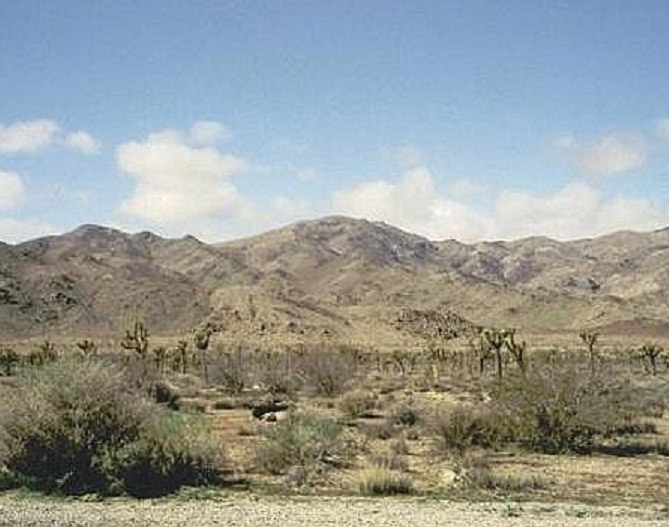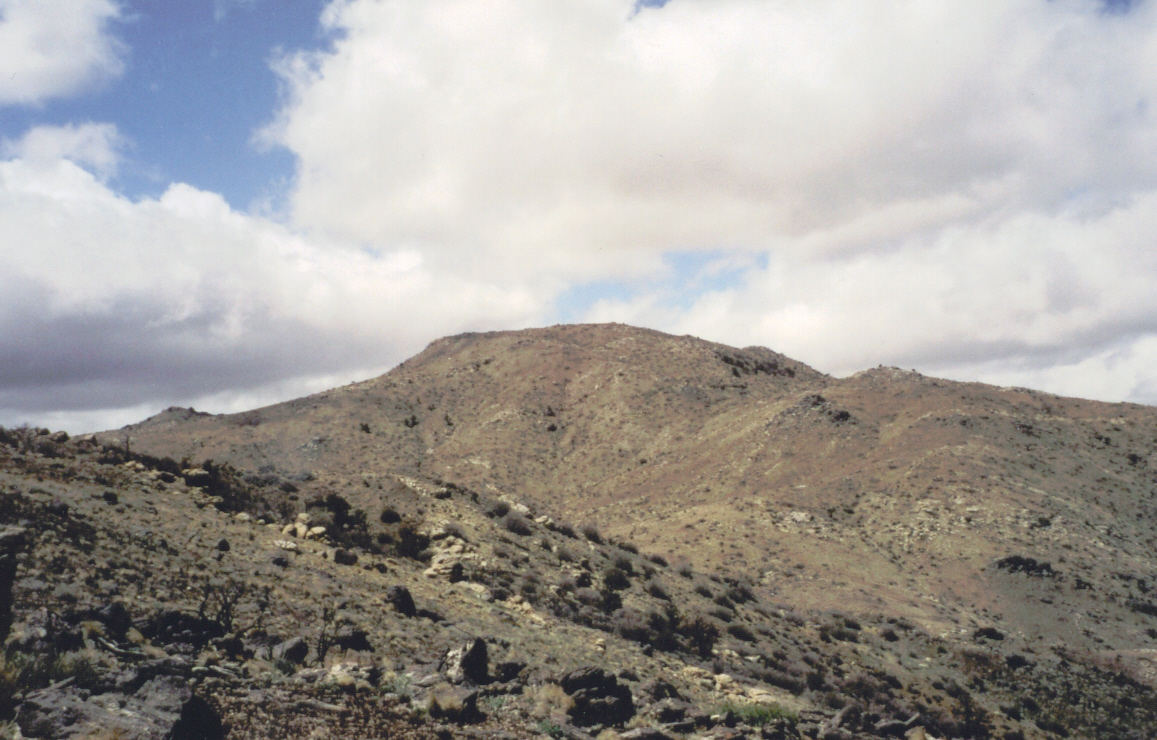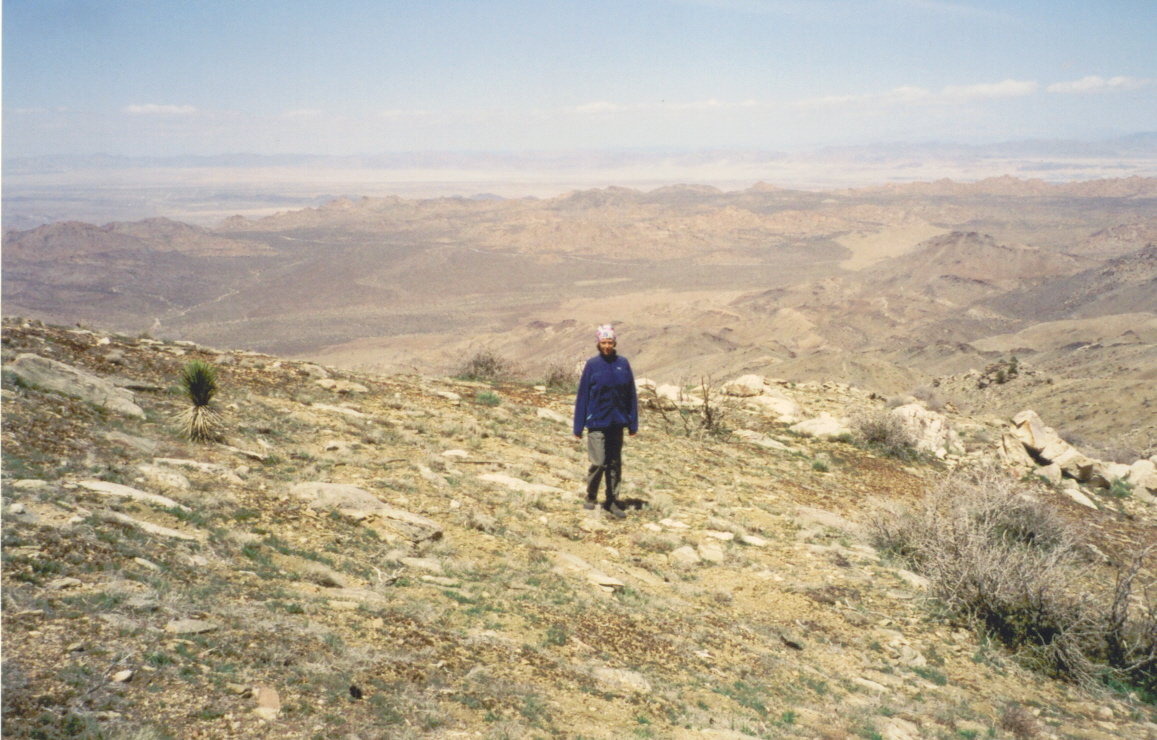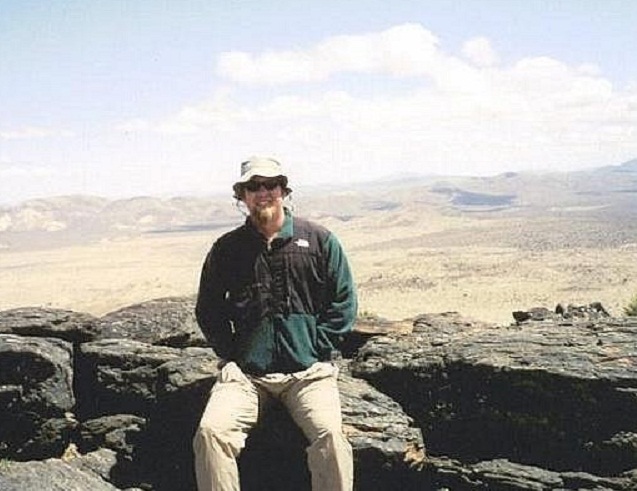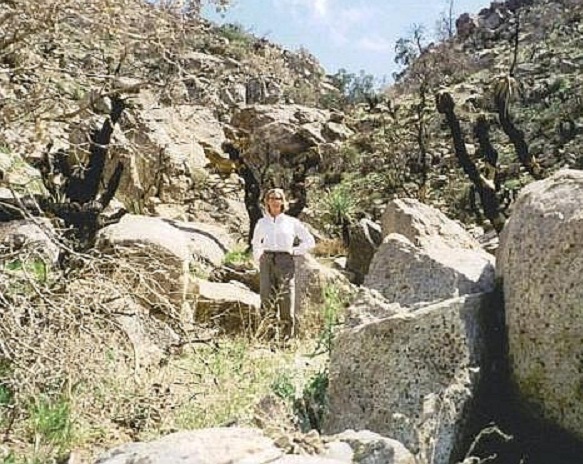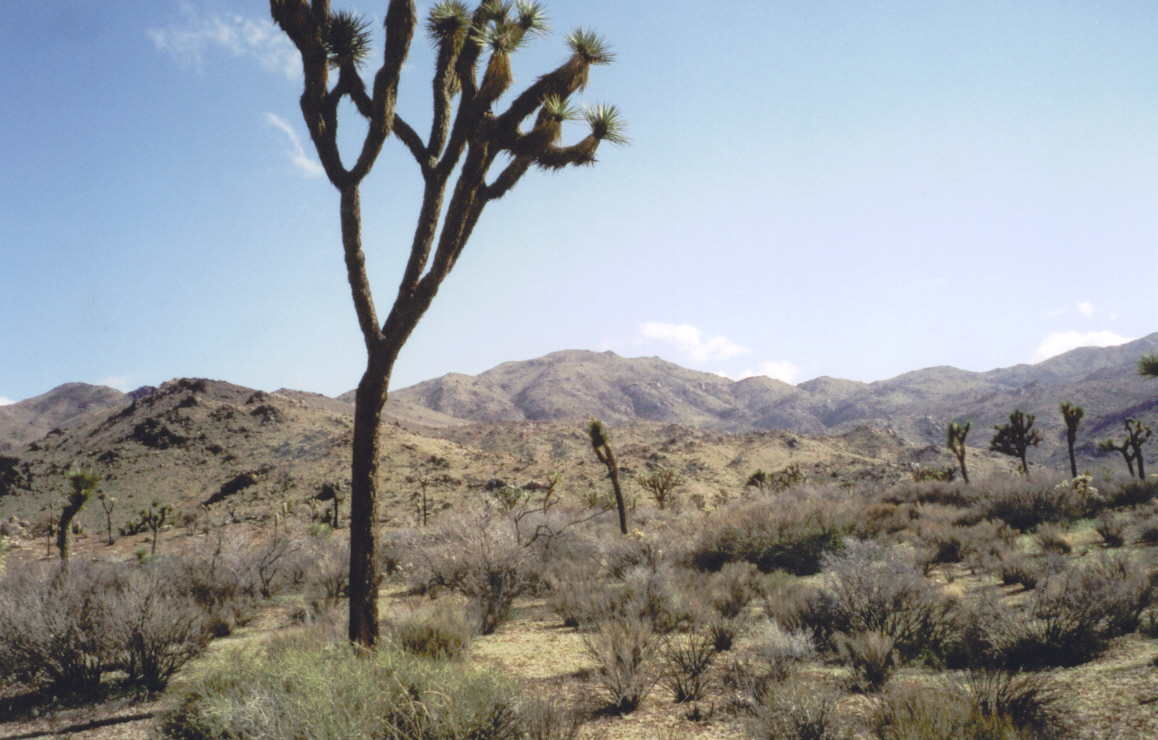
The Mountains of California
www.surgent.net |
| Quail Mountain |
• Highpoint: Joshua Tree National Park • Highpoint: Little San Bernardino Mountains • Riverside County |
|
Date: April 13, 2003
• Elevation: 5,820 feet
• Prominence: 2,293 feet
• Distance: 10 miles
• Time: 7 hours
• Gain: 2,300 feet
• Conditions: Cool with brisk winds
California
•
Main
•
PB
Quail Mountain is the highest peak in Joshua Tree National Park, but not usually a common destination for hikers. Joshua Tree is known for its rock climbing with hundreds of rock outcrops sprinkled throughout the park. Most climbers come here for the rocks, not a trailless "easy" peak hidden in the distance.
We were in Southern California to visit my brother's family plus a tour of my college, U.C. Riverside. The visits went well, but only took a few hours. Our "main" goal was this peak, so we backtracked east, following CA-62 through Yucca Valley, getting a hotel for the night near the north entrance of the National Park. The next morning, we drove into the park on the main road for to a parking pullout near a pile of rock slabs. From here, Quail Mountain was four miles to the southwest.
We walked cross-country across the desert for a mile, dropping slowly to a low-point then up again, ever so slowly, until we came to old road paralleling the base of the range near Johnny Lang Canyon. We walked the road west briefly, then entered into Johnny Lang Canyon itself.
Apparently Johnny Lang was an old prospector, as there is a "Lang Mine" noted on the map in the canyon. The road started as a two-track, then degenerated into a footpath at a wash. The uphill gradient was gentle. The footpath grew weaker and often braided in and out with the sandy washes. After a mile along this path, we started directly up the slopes. We hiked up a steep slope on the southeast flanks of Peak 5,405, coming to a main saddle south of that peak. This stretch included steep slopes, but no technical things like cliffs. The wind was stronger and we often took refuge behind rock outcrops along the route.
From this saddle (which had a cairn and is evidently a waypoint of the "main" route to the top), we traversed along the southwest ridge from Peak 5,405, losing about 420 feet of elevation to come to a low point at 5,000 feet. From here, we walked up the main southeast ridge of Quail Mountain, arriving at the top at about 1 p.m. in partly cloudy and windy conditions. We took refuge inside a rock shelter on the elongated summit's south end, where we relaxed, snacked, snapped photos, and hugged congratulations to one another. After 20 minutes, we trekked north along the top to another rock outcrop, where we found the benchmark and a wood/wire apparatus leaning nearby, probably dating to the original surveyors. The map says this point is 5,813 feet, but the southern area is clearly higher by about 10 feet. From here we started down to my truck.
We decided to take a chance and descend a drainage that comes off the summit's northeast. At first the descent was steep, then we found ourselves in the heart of the rocky drainage. For the next 90 minutes we were descending moderate rock slabs and battling vegetation. The downclimbing involved sections of easy class-3 boulder hopping and scrambling. After a while, and passing by a nearly complete Bighorn Ram skeleton, we were at the mouth of this canyon, back on the desert flats.
It had been a very enjoyable, interesting descent. From here we beelined across the desert back to my truck, arriving at 4 p.m., the big rocky slabs helping us navigate. Six hours later we were back home, both a little sore and feeling the buzz of a successful ascent and trip overall.
|
|
